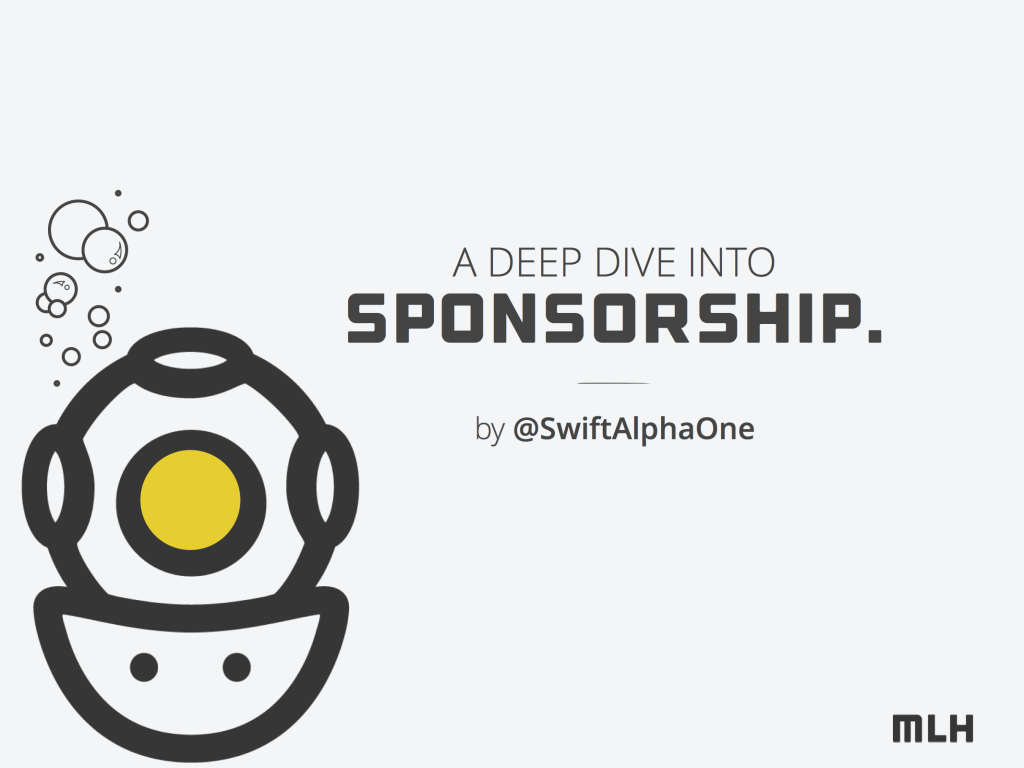I recently gave a workshop on how to raise sponsorship for hackathons. We talked about everything from how to price your sponsorship packages to how to keep sponsors happy. We received a whole bunch of great questions that we didn’t have a chance to answer. So, we put together a post with some of the answers. We hope this helps when you go to raise sponsorship.
How do you contact sponsors? What medium do you use? What do you say?
The best way to initially contact sponsors is over email, especially if you already have a relationship with them or you can get an introduction from someone in your network. The purpose of the initial email is to schedule a phone call to discuss the details of the event and to answer any questions the potential sponsor might have.
On the phone call, you have three objectives: 1) inform the sponsor about the basic premise of your event (who, what, where, when, why, how), 2) find out what the sponsor’s success metrics and goals for this event would be, and 3) determine the appropriate budget for the sponsor. You should let the sponsor do most of the talking by asking targeted questions. Here are some my favorites:
- Tell me about other hackathons or similar events you’ve sponsored in the past?
- What’s your specific role at the company and how do you fit into this event?
- What is your typical budget for an event like ours?
- How do you determine if your event sponsorships are successful?
After the phone call, you should follow up with a targeted pitch based on the information you learned during the call. Give them the tools to sell up the food chain internally at the company (e.g. a pitch deck about the event).
What are ways to provide incentive for a previous sponsor to continue to sponsoring future hackathons?
– Derrick WD
The best way to convince sponsors that they should continue sponsoring future events is to provide them a positive, successful experience at the first event they attend. During your initial phone call, you should have discussed the company’s success metrics and how you were going to help them achieve them. Of course, if you unsuccessful at doing that, the sponsor is likely not coming back.
Some other tools you can use that will help with general sponsor happiness and retention are:
- Regular and timely communication before the event
- Regular check-ins during the event
- A post-mortem phone call with the sponsor after the event
- A handwritten thank you note after the event
- A post-event email summarizing everything that happened at the event (with photos!)
If your event has a regular cadence, you might consider selling multiple semester sponsorships at locked in pricing to the sponsors you know you want to have around at both.
How do you go about setting levels for sponsorship? (i.e. giga, mega, etc.)
– Andrea Baric
The general rule of thumb is to have three tiers to choose from: a cheap tier with few benefits, a medium priced tier with some pretty solid benefits (good value), and a really expensive tier that includes everything and the kitchen sink. The cheap and expensive tiers act as anchor pricing and make the medium tier look a lot more reasonable and valuable.
Generally, if there’s a benefit that a sponsor really wants and it’s not listed on the prospectus, they will ask you to include it at the level they’re thinking about. For example, if an API company doesn’t see an API demo listed, they’ll definitely want it and ask for it, but a recruiting company or a company that doesn’t do a lot of hackathons might not know it’s even a thing or value it as highly.
The price of each of your teirs should be determined by the budget of your event and how many sponsors you plan on having.
How do you convince the sponsor that you are a good pick?
– Leo Lin
The biggest mistake we see new organizers make is that they try to differentiate their event before they’ve even gotten the basics down, and they want to use that as a selling point for sponsors. Sponsors that regularly are involved with hackathons want to see the format that they know and love, prove to them that you understand how to run a good event and don’t add too much complexity early on.
If you really want to differentiate, talk to the sponsors about your team and what makes you the best possible organizers for this event. The truth is, you’re selling a dream. There are a million ways sponsors could be spending the money they’re planning to give you, and you want them to believe this is the best possible option.
Don’t diminish it by using maybes, or “we hope to haves,” sell what you’re expecting like it’s fact, but always remember over-delivering is better than over-promising.
What timeline should we have for raising sponsorship?
The earlier you start reaching out to sponsors the better. Sponsorship budgets operate on a quarterly cycle, so if you want your event to definitely be included in the upcoming budget, reach out before the quarter starts. Note that not every company uses the standard quarters, so if you reach out at least 4 months before your event you’re guaranteed to be outside the upcoming quarter.
Make sure you have the basic details locked down before you start selling (vision, website, pre-registrations, venue, etc). Your pitch will be much more powerful if you have a date and location set and some interest from hackers.
If you want to know more about raising sponsorship, please checkout the video of the workshop or my slides.
Happy Hacking.
Swift
P.S. I’m giving another workshop on Budgeting For Your Hackathon on January 21st check it out! We’d love to have you.
